
Operation Wolf is a light gun shooter arcade game developed by Taito and released in 1987. It was ported to many home systems.
Gargoyle Games was a British software company founded in 1983 by Roy Carter and Greg Follis in order to publish their first game, Ad Astra. They generally specialized in games for the ZX Spectrum even though the company was originally named with the intention of publishing games for Dragon computers. They later created a new label specifically for arcade-style games, Faster Than Light (FTL), as well developing titles for Elite Systems.

Pentagram is a ZX Spectrum and MSX video game released by Ultimate Play the Game in 1986. It is the fourth in the Sabreman series, following on from his adventures in Sabre Wulf, Underwurlde and Knight Lore. Similarly to Knight Lore it uses the isometric Filmation engine. The game was written by either Tim and Chris Stamper or a U.S. Gold programming team.

Gunfright is an action-adventure game developed by Ultimate Play the Game and published by U.S. Gold. It was first released for the ZX Spectrum in December 1985, then released for Amstrad CPC and the MSX the following year. The player takes the role of a sheriff in the town of Black Rock and is tasked with eliminating outlaws who are scattered throughout the settlement.

Tau Ceti is a video game published in 1985 by CRL for the ZX Spectrum and converted to the Amstrad CPC, Amstrad PCW, Atari ST, Commodore 64, and MS-DOS. It was designed and programmed by Pete Cooke. The world, set on Tau Ceti III orbiting Tau Ceti, is displayed using 3D graphics with shadow effects. The planet has a day and night cycle.
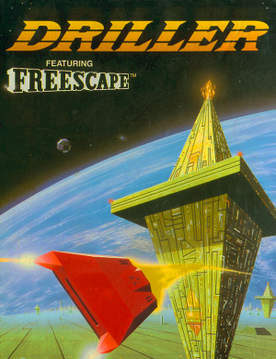
Driller is a 1987 puzzle video game. It was written by British developers Major Developments and published by Incentive Software for the ZX Spectrum, Commodore 64, Amstrad CPC, Amiga, Atari ST, and MS-DOS. It uses the Freescape 3D game engine.

The Trap Door is a video game published for the ZX Spectrum in 1986 by Piranha Software and ported to the Amstrad CPC and Commodore 64 by Five Ways Software. It was written by Don Priestley and based on the British children's television show of the same name.
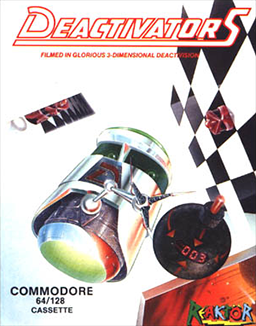
Deactivators is a 1986 puzzle video game designed by David Bishop and Chris Palmer, developed by Tigress Marketing and System Software, and published by Ariolasoft's action game imprint Reaktor. The player controls bomb disposal robots known as deactivators and must use them to deactivate bombs planted by terrorists in five research complexes. The concept for the game came from a brainstorming session between Bishop and Palmer; its design and development took five to six months to complete. It was released for the Amstrad CPC 464, Commodore 64, and ZX Spectrum platforms in October 1986.

Welltris is a puzzle video game, developed by Doca and licensed to Bullet-Proof Software. It is an official game in the Tetris series. Adaptations were made by Sphere, Inc., for Spectrum HoloByte, and by Infogrames. It was released for MS-DOS compatible operating systems in 1989. Ports for Macintosh, Amiga, Amstrad CPC, and Atari ST followed 1990, then ZX Spectrum and Commodore 64 1991.
Faster Than Light (FTL) was a software publishing label established by UK video game publisher Gargoyle Games. The aim was for FTL to publish arcade-style games, while Gargoyle would concentrate on its core business of adventure games.

Zub is a 1986 platform video game designed by Ste and John Pickford, developed by Binary Design, and published by Mastertronic for the Amstrad CPC, Commodore 64 and ZX Spectrum. The game has the player control Zub, who has to travel to different planets to retrieve the Green Eyeball of Zub. A parody of the game Light Force, called Lightfarce, was added in as an easter egg. The music on all computers was composed by David Whittaker.
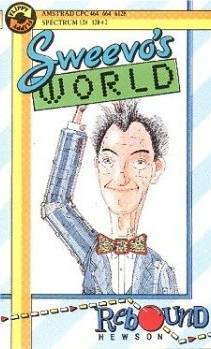
Sweevo's World is an isometric 3D arcade adventure game released by Gargoyle Games in 1986 for the ZX Spectrum and Amstrad CPC. An enhanced version for the Spectrum 128K was also released, titled Sweevo's Whirled. The game was followed by a sequel, Hydrofool.
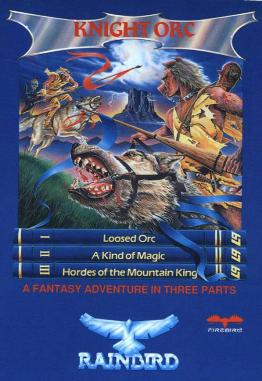
Knight Orc is a text adventure game, with limited graphics on some platforms, by Level 9 released in 1987. It comes with a short novella by Peter McBride explaining the background to the story.
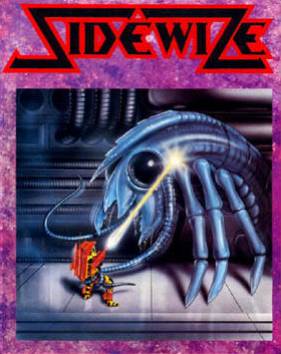
Sidewize is a horizontally scrolling shooter released by Firebird in 1987 for the Commodore 64 and ZX Spectrum home computers. It was followed by a sequel, Crosswize.
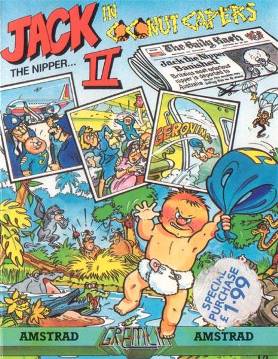
Jack the Nipper II: In Coconut Capers is a video game by Gremlin Graphics released in 1987 for ZX Spectrum, Commodore 64, Amstrad CPC, and MSX. It is the sequel to Jack the Nipper. As with the previous game, Jack the Nipper II is a side-view flip screen game with puzzle solving and platform elements. The false-3D effect has been removed, making the gameplay pure 2D.

Light Force is a 1986 vertically scrolling shooter designed by Greg Follis and Roy Carter, developed by their company Gargoyle Games, and published under their Faster Than Light imprint. It was released for the Amstrad CPC, Commodore 64, and ZX Spectrum platforms.
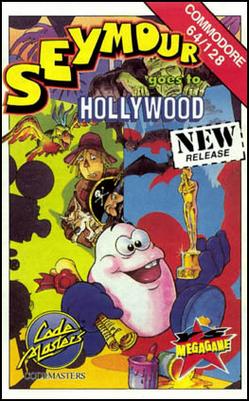
Seymour Goes to Hollywood, also known as Seymour at the Movies, is a platform and adventure game developed by Big Red Software and originally published in Europe by Codemasters in 1991. Players control Seymour, a small potato-like creature who wishes to be a film star. The film's script has been locked in a safe, meaning Seymour must solve puzzles by collecting and using objects scattered throughout the game in order to progress, ultimately retrieving the script and allowing filming to start.

Survivors is a game published by Atlantis Software in 1986 for the ZX Spectrum. It was ported to the MSX, Atari 8-bit family, Commodore 64, Commodore 16, Acorn Electron, and BBC Micro and the Amstrad CPC (1988). It is a puzzle game based on the "rocks and diamonds" mechanics of Boulder Dash.

Soft & Cuddly is a horror action-adventure game released for the ZX Spectrum home computer. It was developed by John George Jones and published by The Power House in September 1987 in the United Kingdom and in early 1988 in Spain. The player assumes the role of a man armed with a laser gun and a jet pack, whose mother, the Android Queen, has been dismembered. The player's task is to locate the scattered body parts of the Android Queen and sew her back together.
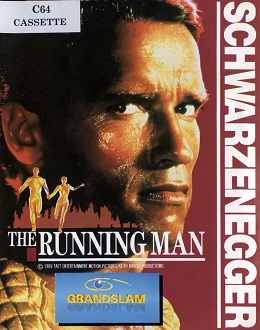
The Running Man is a 1989 beat 'em up video game based on the 1987 film of the same name. It was developed by Emerald Software and published by Grandslam Entertainments for Amiga, Amstrad CPC, Atari ST, Commodore 64, and ZX Spectrum.


















